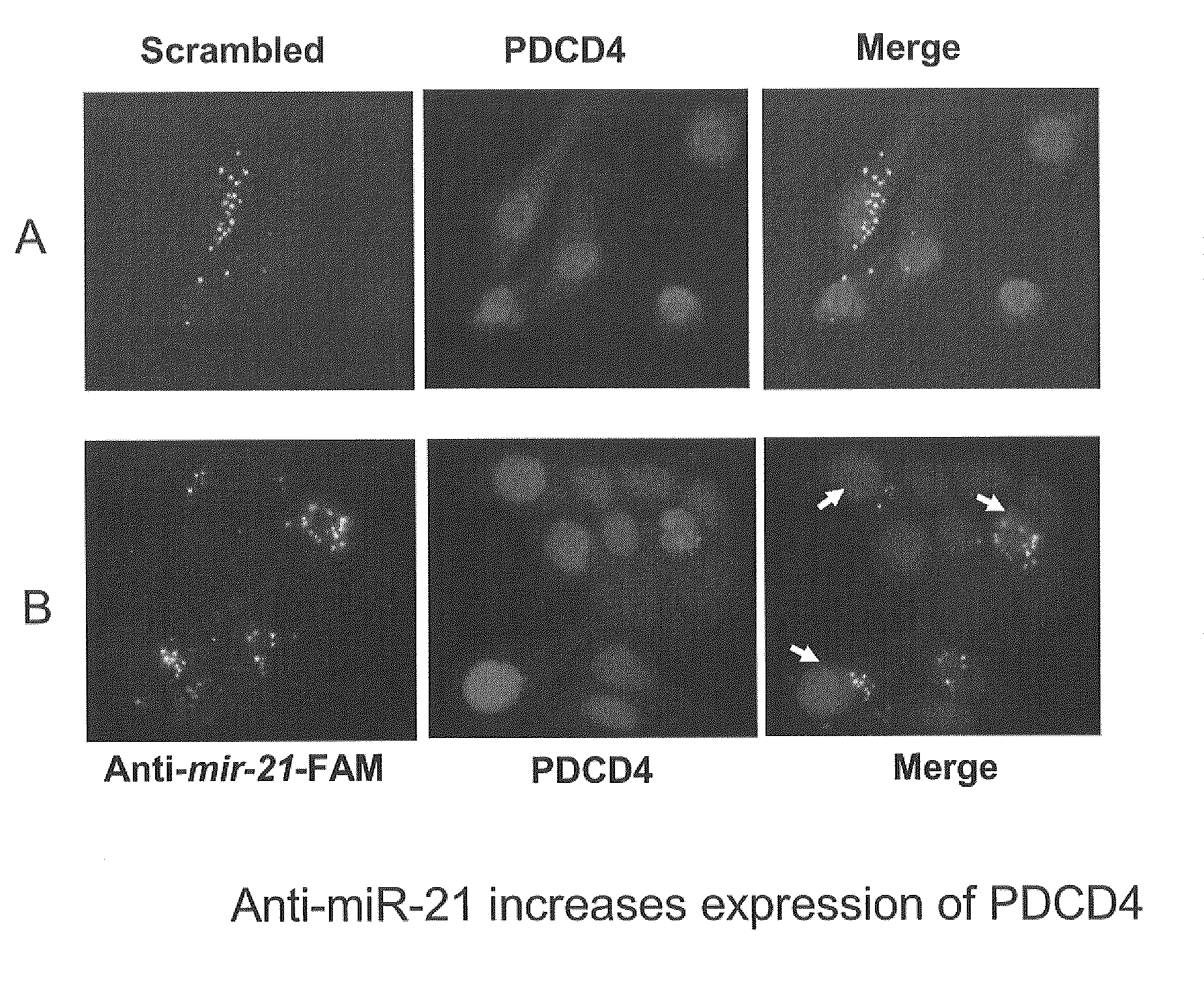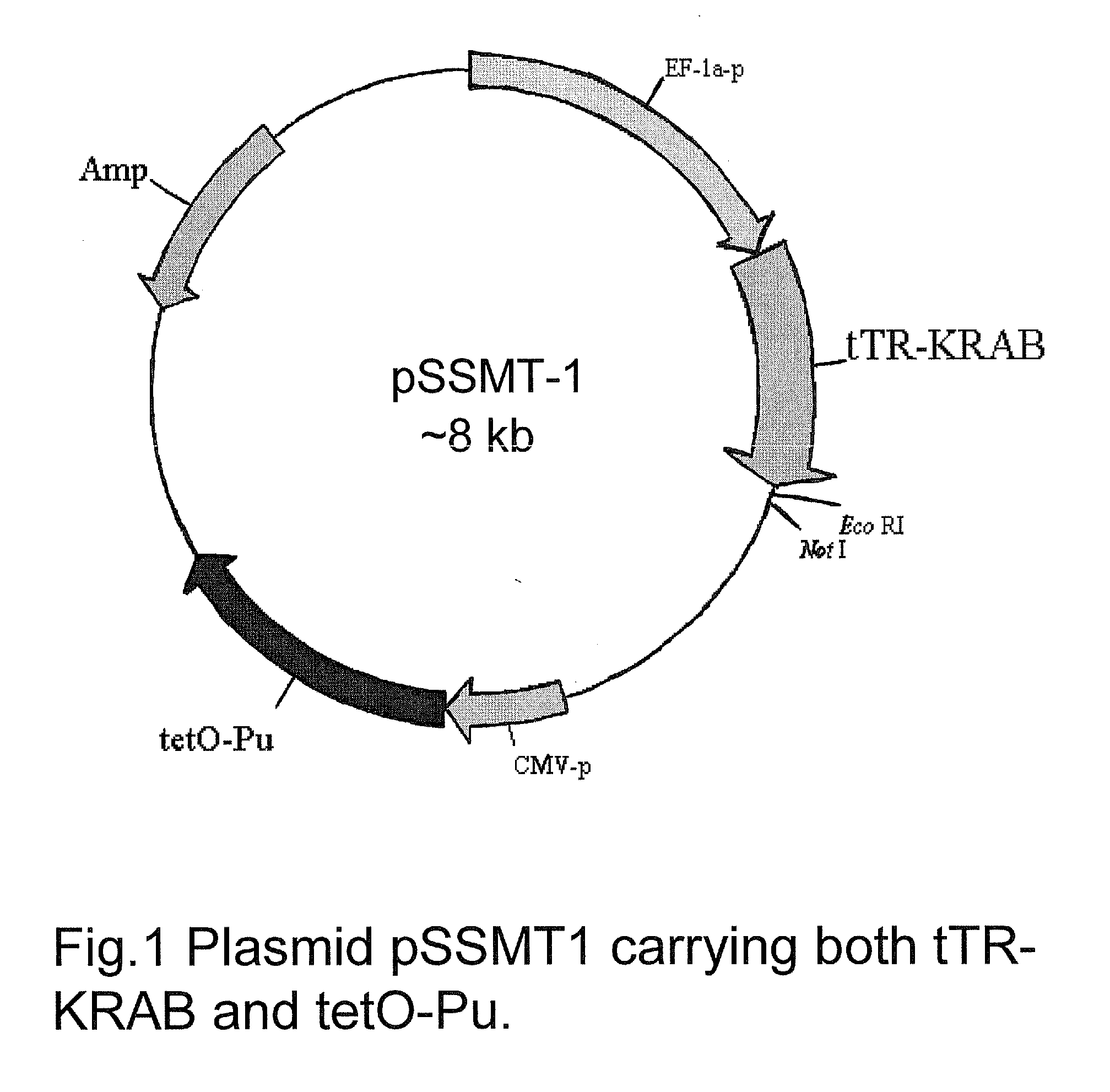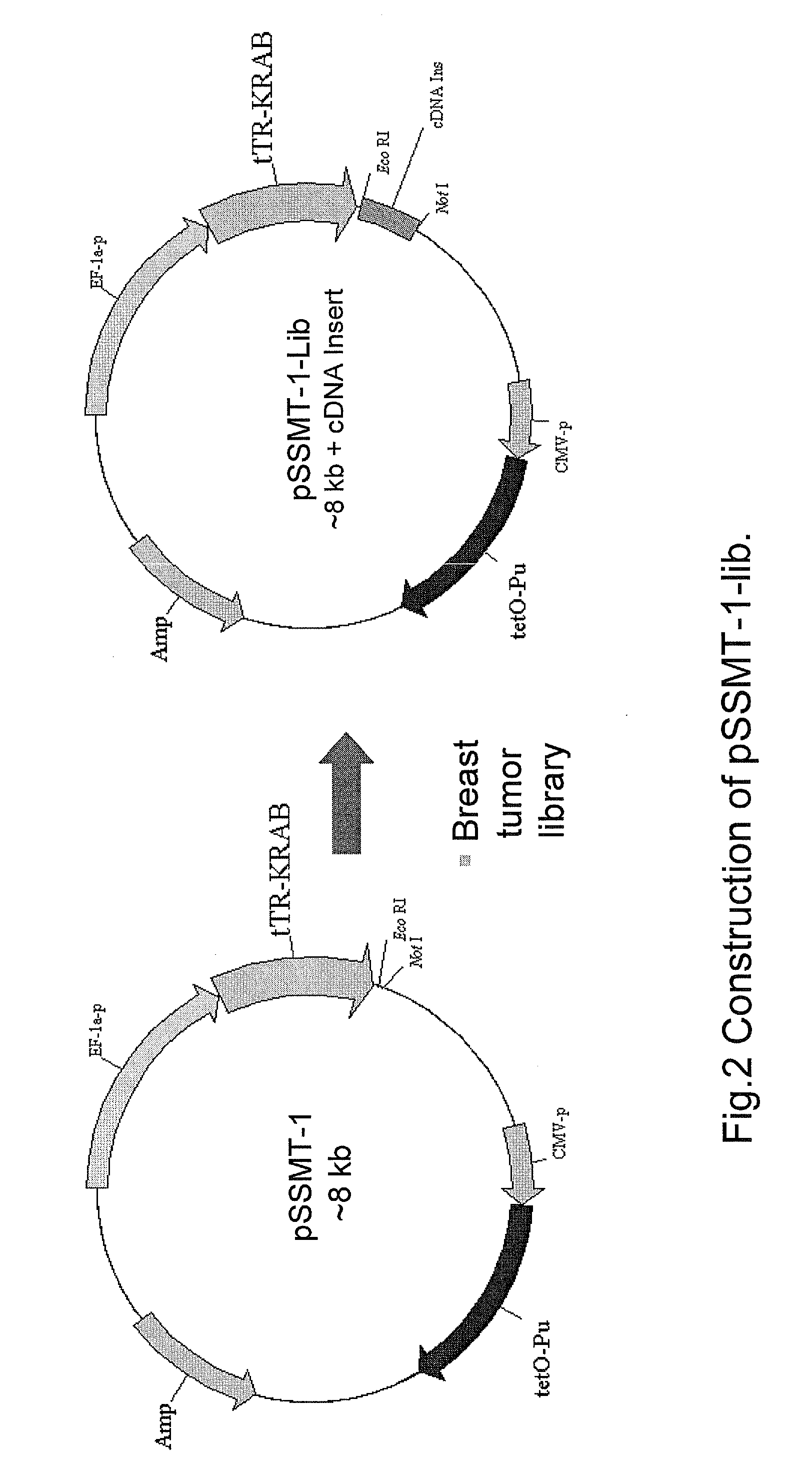GENETIC SELECTION SYSTEM FOR IDENTIFICATION OF MicroRNA TARGET GENES
a gene selection and target gene technology, applied in the field of expression cassettes, can solve the problems of complex computational target prediction, computer-aided algorithms are still unable to provide a precise picture of the microrna regulatory network, and the difficulty of microrna target prediction
- Summary
- Abstract
- Description
- Claims
- Application Information
AI Technical Summary
Benefits of technology
Problems solved by technology
Method used
Image
Examples
example 1
Construction of pSSMT-1
[0155]Referring now to FIG. 1, a pGL3 control vector (Promega) was used as a backbone to construct pSSMT-1. pGL3 vector control was digested with Not1, followed by filling with Klenow and self-ligation to eliminate the Not1 site. The purpose of this step was to introduce a new Not1 site downstream of tTR-KRAB to facilitate ligation of cDNA clones from the breast tumor library (in pCMV-SPORTS from Invitrogen) at a later stage. The modified vector was then digested with Hind3 and Kpn1 to remove the 240 bp SV40 promoter and insert the self-annealed adaptor sequences pGL3-Adaptor-5 (5′-CTTGGGATTTGAATAGGAA CCTGCAGGT) and pGL3-Adaptor-3 (5′-AGCTACCTGCAGGTTCCTATTCAAATC CCAAGGTAC) through which a Sbf1 site (underlined) was introduced to accommodate the tTR-KRAB fragment carrying Kpn1 at one end and Sfb1 on the other end. To introduce the tet operator element (tetO), tetO was amplified using primers TRE-Bgl2-5.2 (AGGCGTATCACGAGGCCCTTTCGAGATCTAGTTTACCACTCCCTATCAGT, wher...
example 2
Construction of pSSMT-1-Lib
[0156]A 3′-UTR library was constructed by migrating a breast tumor cDNA library clones (Invitrogen) into pSSMT-1, resulting in pSSMT-1-Lib (FIG. 2). Although this is not a true 3′-UTR library because some clones carry complete gene coding sequences, a previous study suggests that an entire coding region plus the 3′-UTR carrying a miR-21 binding site is able to respond to regulation by miR-21 (Zhu et al, J Biol Chem 2007; 282:14328-14336). Furthermore, this library allows for determination of whether any sequences in addition to the 3′-UTR are responsible for regulation by miR-21.
[0157]Referring now to FIG. 2, a commercially available cDNA library expected to contain fragments to carry protein-coding sequences, was subcloned into pSSMT-1 to generate pSSMT-1-Lib. In particular, a breast tumor cDNA library made in pCMV-SPORTS (Invitrogen) was digested with EcoR1 and Not1. The cDNA library was digested with EcoR1 and Not1 and most of the inserts ranging from 0...
example 3
Enforced Expression of miR-21
[0158]PCR was then used to amplify the pre-miR-21 contained in DNA fragments from MCF-10A genomic DNA as described previously (Zhu et al, J Biol Chem 2007; 282:14328-14336), and the expression of mature miR-21 was confirmed by TaqMan real-time PCR.
PUM
| Property | Measurement | Unit |
|---|---|---|
| nucleic acid | aaaaa | aaaaa |
| immunofluorescence microscopy | aaaaa | aaaaa |
| length | aaaaa | aaaaa |
Abstract
Description
Claims
Application Information
 Login to View More
Login to View More - R&D
- Intellectual Property
- Life Sciences
- Materials
- Tech Scout
- Unparalleled Data Quality
- Higher Quality Content
- 60% Fewer Hallucinations
Browse by: Latest US Patents, China's latest patents, Technical Efficacy Thesaurus, Application Domain, Technology Topic, Popular Technical Reports.
© 2025 PatSnap. All rights reserved.Legal|Privacy policy|Modern Slavery Act Transparency Statement|Sitemap|About US| Contact US: help@patsnap.com



